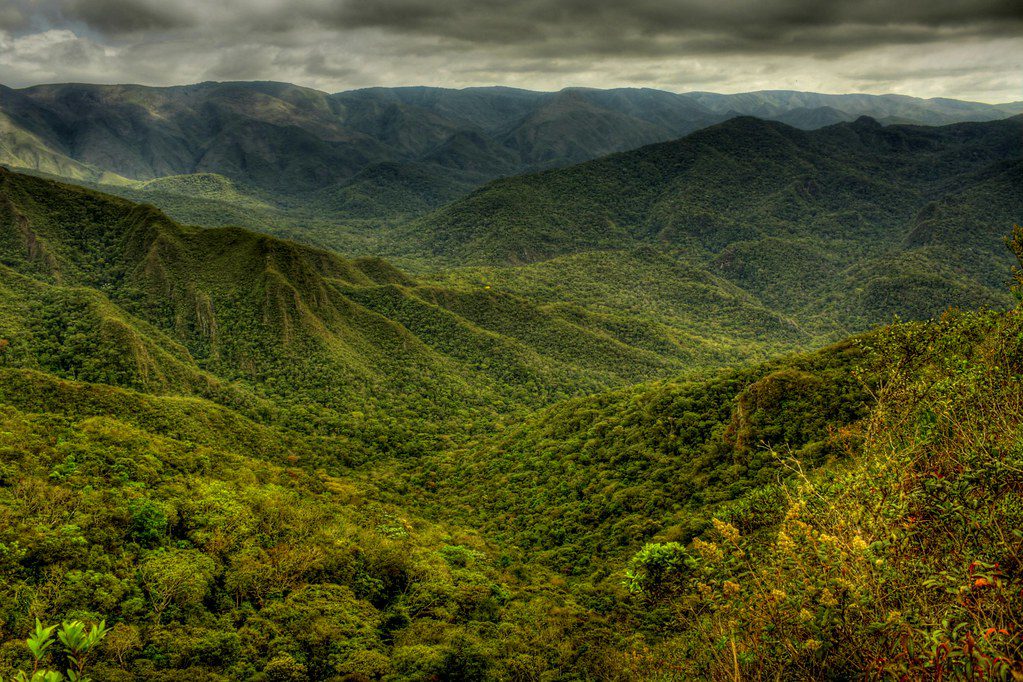On May 27, we celebrate the National Day of the Atlantic Forest, a date that dates back to the signing of the Charter of São Vicente by Father Anchieta, in 1560. In this important document, the richness of the biodiversity of tropical forests was recorded for the first time in the Americas. The document relates Father Anchieta's experiences and observations during his travels and explorations in the region. It describes the characteristics of the flora and fauna found, as well as the interaction of indigenous communities with the natural environment. The São Vicente Charter is considered one of the first scientific descriptions of biodiversity in the Americas, providing valuable information about the biological diversity present in the Atlantic Forest at the time.
The Atlantic Forest, the second largest rainforest in Brazil, is home to a unique biodiversity that rivals the largest on the planet. Its biological diversity encompasses a wide variety of plant and animal species, many of which are endemic, that is, found only in this region. Although it is difficult to provide a comprehensive list of all species present in the Atlantic Forest, here are some representative examples of its biodiversity:
- Flora: The Atlantic Forest is home to a great diversity of plant species, including numerous trees, shrubs, orchids, bromeliads and ferns. It is estimated that there are more than 20,000 plant species in this biome, with a high proportion of endemic species.
- Terrestrial fauna: The Atlantic Forest is home to a wide variety of terrestrial animals, including mammals such as the jaguar, the golden lion tamarin, the giant armadillo and the dusky marmoset. In addition, the region is home to a diversity of reptiles, such as snakes and lizards, and a wide variety of birds, such as the jacutinga, the green-billed toucan and the purple-faced parrot.
- Aquatic fauna: The Atlantic Forest also has a wealth of aquatic species in its rivers, streams and lakes. Fish such as lambari, dorado, cascudo and surubim inhabit these waters, along with amphibians such as tree frogs and frogs. In addition, crustaceans, molluscs and a variety of aquatic insects contribute to the diversity of the aquatic ecosystem.
- Marine Biodiversity: The Atlantic Forest also extends along the Brazilian coast, covering a significant part of the Atlantic Ocean. In these waters, we find a rich marine diversity, including corals, colorful fish, sea turtles, dolphins and a variety of marine invertebrates.
This region comprises approximately 15% of Brazilian territory and extends across 17 states, from Piauí to Rio Grande do Sul, in addition to parts of Argentina and Paraguay. Although, during the period of discovery, this forest continuously occupied the entire coastal strip, currently only two large fragments of native vegetation remain. These are located in Serra do Mar, between the states of Paraná and Rio de Janeiro, and in the region of Foz do Iguaçu, on the border with Argentina and Paraguay. Data from SOS Mata Atlântica reveal that only 12.4% of the original forest remains preserved, due to the advance of urbanization and industrialization.
Despite the undeniable importance of the Atlantic Forest for the conservation of biodiversity, this region continues to face high rates of deforestation, which puts various plant and animal species at risk. In just the first six months of 2020, the deforestation rate was already higher than that recorded in the entire previous year.
For this reason, public policies aimed at conserving the Atlantic Forest play an extremely important role. The Conservation Units, for example, play a fundamental role in the preservation of this region, not only guarding the richness of its biodiversity, but also interacting with local communities. In addition to offering activities for public use, when permitted, the Conservation Units promote community participation through Management Councils and the preparation of management plans. It is essential that the population recognizes itself as an integral part of these Units and is engaged in the fight for their preservation.
Worrying Data Point to the Need for Strict Laws to Protect the Atlantic Forest
Between October 2021 and October 2022, more than 20,000 hectares of the Atlantic Forest were deforested, according to data released by the National Institute for Space Research (INPE). The Atlantic Forest is a biome that extends along the Brazilian coast and covers 17 states, in addition to Paraguay and Argentina.
Minas Gerais stands out as the state with the highest deforestation, registering the felling of 7,456 hectares in one year, which is equivalent to more than ten thousand soccer fields. Agriculture is the main cause of deforestation in Bahia, Minas Gerais and Piauí, accounting for 73.2%, 93.4% and 64.5% of the deforested areas, respectively. This trend is repeated throughout the biome, where 86.4% of total deforestation is driven by agriculture. Final data reveal that deforestation reached a total of 20,075 hectares of the biome, resulting in the emission of 9.6 million tons of CO2 equivalent into the atmosphere. This figure represents a reduction of 7% compared to the previous year, when 21,642 hectares were deforested. However, the deforested area is the second largest in the last six years and is 76% above the lowest value recorded in the historical series.
Regarding the geographic distribution of deforestation, Mato Grosso do Sul, Minas Gerais, Paraná, Bahia, São Paulo and Santa Catarina are responsible for more than 50% of all deforestation in the biome. In the first ten months of 2022, 48,660 hectares were deforested. Bahia and Minas Gerais lead deforestation in this period, with 15,814 and 14,389 hectares, respectively, followed by Piauí, with 6,232 hectares deforested.
Data from SOS Mata Atlântica highlight that these numbers confirm the increase in deforestation in the biome, following a trend observed in other biomes in Brazil, such as the Amazon, where the highest rates of the last 10 years have been recorded. The large-scale agricultural expansion is identified as the main cause of the large continuous deforestation, showing failures in inspection and in the fight against deforestation throughout the country.
It is worrying to note that over 86% of total deforestation in the Atlantic Forest is driven by agriculture. This statistic underscores the need for a comprehensive approach to agricultural development that takes into account the conservation of natural resources and the protection of the environment.
The final data reveal that around 9.6 million tons of CO2 equivalent were emitted into the atmosphere due to deforestation in the Atlantic Forest. This emission contributes to the worsening of climate change and its negative impacts, such as the increase in global temperature and the intensification of extreme weather events.
To reverse this alarming situation, it is crucial to implement stricter laws to protect the Atlantic Forest. These laws should include strict enforcement of environmental regulations, severe penalties for those who violate the legislation, and incentives for sustainable land use practices. In addition, it is essential to involve all sectors of society, including governments, non-governmental organizations, companies and local communities, in the effort to preserve the Atlantic Forest. Public awareness of the importance of this biome and the benefits it offers to the quality of life and the health of the planet also play a crucial role in conservation.
The protection of the Atlantic Forest is not only a responsibility of Brazil, but also a global issue. This biome is home to unique species and plays a key role in climate regulation and ecosystem balance. Therefore, it is imperative that urgent measures be taken to strengthen the protection of the Atlantic Forest and guarantee its preservation for future generations.




